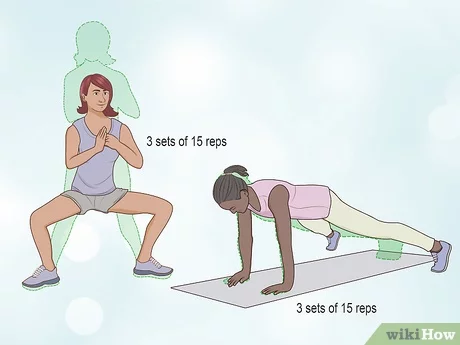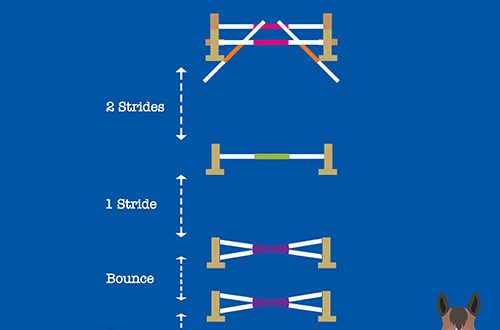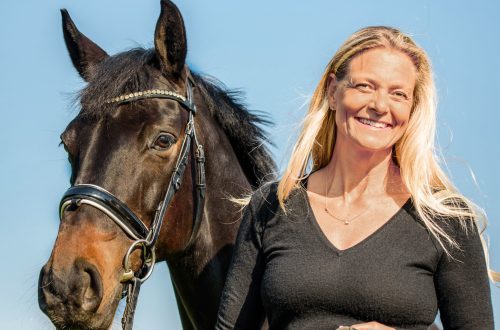
Working on fit: our thighs!
Working on fit: our thighs!
Our hips have a big impact on how we ride and how the horse moves.
Tight hips are the main reason why we hop over the saddle in the training trot, the legs swing excessively and our head nods, not to mention that they restrict the horse’s forward movement. Hip problems are not only related to with fortification. Our hips can be stiff and weak at the same time, not to mention their imbalance either from side to side or from front to back.
If our pelvis is out of alignment and one hip is higher than the other, the horse will fill in the “flaw” by raising the hip on the corresponding side so that his hind leg on that side loses the ability to flex properly and carry weight. If one side of our pelvis inadvertently moves forward more than the other, it will be easier for the horse to canter, hip-in, and half-half in that direction. In the worst case, the horse will regularly offer shoulder-in.
If our weight is unnecessarily shifted to one of the seat bones, the horse will shift in that direction and narrow the circle in that direction.
If the rider’s pelvis is always tilted forward, sooner or later the horse will reflect this position by falling on the front and falling through the back.
If the pelvis is always tilted back (sitting like a chair), then the horse’s back will sag and the hind legs will lag behind.
In doing so, we can use our hips to create proper flexion to help the horse lengthen the stride, we can use them during the half halt and ask for lateral movement.
Hunched posture. Neutral posture. Arched posture.
Deep core muscles are connected in any posture.
Like horsemen, we need a pelvis, to move from a neutral position with the sitting bones pointing down to the position required when we signal the horse, and then to return back to a neutral position. So to be good riders, we not only need to be aware of what our pelvis is doing (whether our hips are even or not), we also need our hips to be mobile so we can “tune” our pelvis and do what we do. want to do, and when we want to do it.
Tight hips can lead to a variety of problems. They are the main cause of common problems such as back pain, hip pain and many others. Therefore, correcting our hips – this affects not only the improvement of the ride, but also the improvement of health. So identifying and correcting any pelvic misalignment can not only drastically improve your riding, but also end the lower back, hip and knee pain you are also experiencing!
But how do you know if you have a hip skew? Your hips are most likely uneven if:
- you keep one shoulder higher than the other;
- one shoulder more protruding forward;
- you tend to stand with more than one leg loaded;
- one side of your torso seems longer than the other;
- one leg seems longer than the other;
- your horse moves outward when moving in a circle to one side;
- your horse moves inward when moving in a circle to one side;
- you cannot ride in a straight line without using the reins to correct your trajectory;
- your horse moves more easily to one side;
- you are struggling to get up into a canter with one of your legs.
Muscle imbalance usually develops around the hip if you sit for a long time, spend a lot of time driving, sleep on one side, slouch to one side and, when standing, load one leg more than the other. All of these can exacerbate the problem of uneven hips. Exercises can solve it, but before moving on to their consideration, let’s take a closer look at the problem area.
There are several muscles in the hip area that need to be strengthened and/or stretched for the hips to move properly, but probably the most important of these is the iliopsoas (iliopsoas), which consists of the iliac muscle (iliac) and psoas (psoas), which lie deep in the back of the abdomen. Other important hip flexors include the piriformis muscle (periformis), tensor of the wide fascia of the thigh (tension band width (TFL)), rectus femoris (straight thigh) (one of the four quadriceps), as well as the gluteus maximus (gluteus maximus) (which is located on the back of your thigh or buttocks) and the gluteus medius (gluteus medius), which is the main muscle on the side of your thigh.
To help with the work on these muscles will help the following exercises:
1. Lone warrior
Stand with your feet hip-width apart. Exhale as you take a wide step forward with one foot (1,20-1,50 m).
The right foot should look straight ahead. Left – rotated inwards at a 45 degree angle.
Align the heel of your front foot in line with the instep of your right hind foot. Align your hips as far as you can.
Shift your weight onto your left heel. Then exhale as you bend your right knee over your right ankle. Your lower leg should be perpendicular to the floor.
Hands up. Stretch your belly, lengthen the sides of your waist, and lift your chest.
You can keep your palms parallel to each other or cross your palms in a lock.
Gently tilt your head back and look at your thumbs. Don’t lift your shoulders. Feel how your shoulder blades are tightly closed.
Shift your weight to the outer edge of your left leg, keeping your back straight.
Hold this position for up to one minute.
To free yourself, lean on the heel of your right foot and straighten your left leg. Put your hands down. Change legs and repeat the exercise again.
2. Bridge
Lie on your back with your knees bent so that your feet are flat on the floor with your toes pointing forward and hip-width apart. Your knees should point straight up. Make sure your feet, knees and hips are aligned the head is not tilted, and the shoulders are straight.
Place your arms parallel to your body, palms down. Feel your spine touch the ground. It should lie neutral, be naturally curved. Breathe slowly and smoothly.
As you exhale, tighten your psoas (psoas), pull your pelvis forward so that a small part of it touches the ground and begin to lift your spine off the floor, one vertebrae at a time. Leave your shoulders on the floor and keep your pelvis up by tucking your stomach in. up. Hold the pose for a count of 20, feel the stretch.
On the next breath, reverse the motion, one vertebrae at a time. Keep the tone in the pelvic area, and also do not relax the psoas and abdominal muscles. When your back touches the ground, relax your pelvis. Relax for one inhale/exhale and repeat on the next inhale.
3. A boat
Sit on the floor with your knees bent. Feet flat on the floor, toes pointed forward, feet spaced about hip-width apart. Make sure your knees are aligned with your hips.
Grab the back of your thighs, just below the knee, or the front of your shins, just below the knee. Breathe into the “center” of yourself. Stretch up through your spine.
Gently lean back on your sitting bones. Tighten your psoas and lift your legs off the ground.
Keep your shoulders relaxed. Slowly raise your legs until your shins are horizontal to the ground.
Stretch your arms forward, palms facing inward. Hold on to the count of 20. Return your feet to the floor.
Fran Griffith (source); translation Valeria Smirnova.





